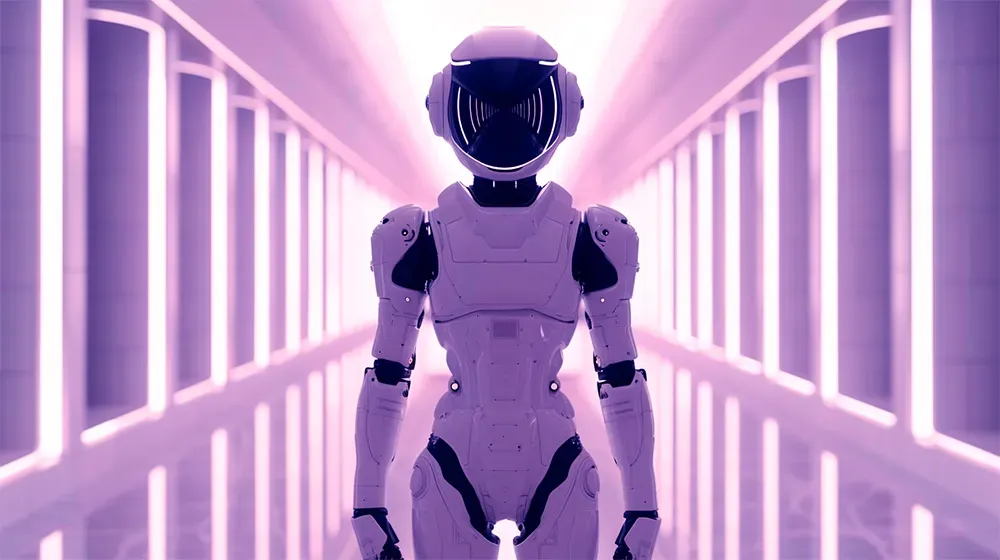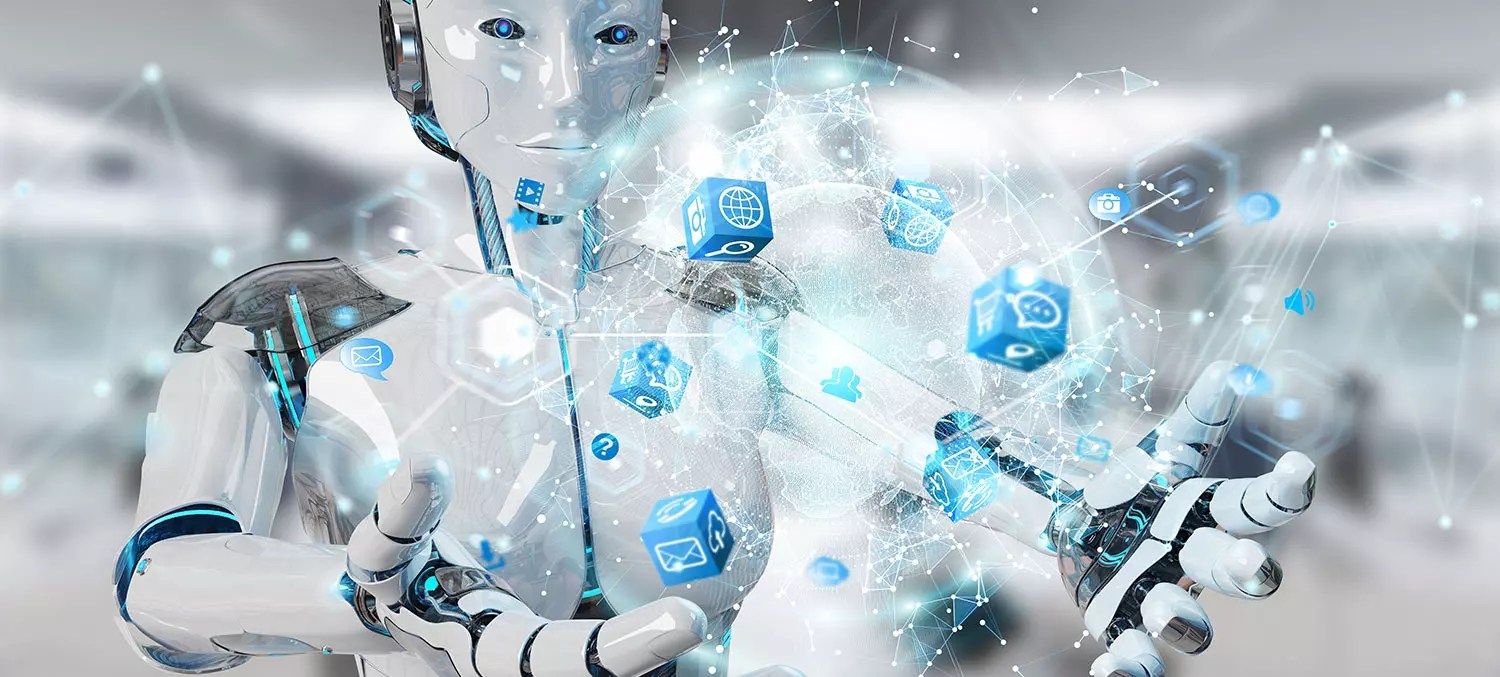The Rise of the Robots and Its Implications for Business
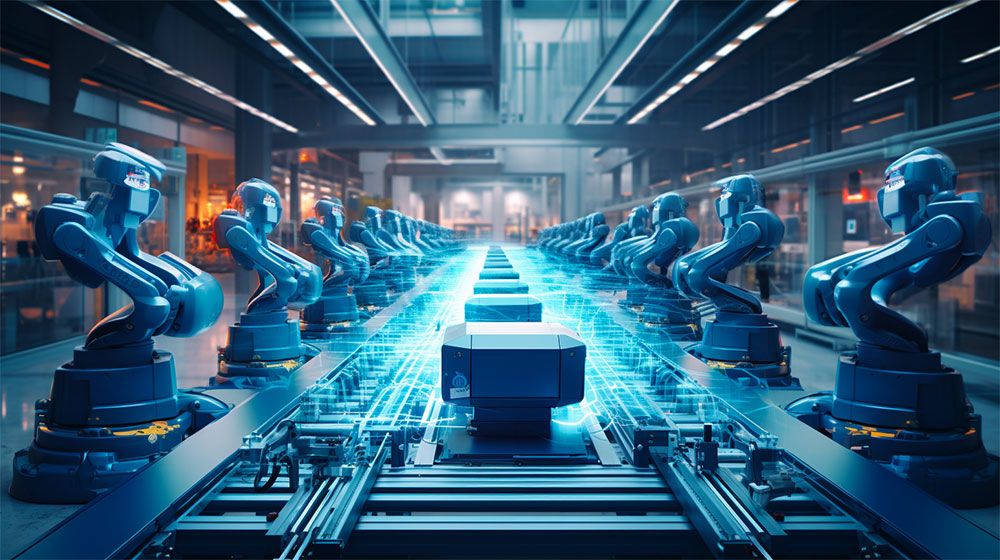
In a world where technological advancements seem to know no bounds, few innovations have captured our imagination and fascination like robots. From the realm of science fiction to the forefront of our reality, robots have swiftly transitioned from mere fantasy to tangible creations, revolutionising industries and reshaping how we live and work.
Today, we find ourselves standing on the precipice of a new era—one defined by robots' rapid development and integration into our daily lives. These sophisticated machines, capable of performing a wide range of tasks with incredible precision and efficiency, have already made significant strides across various fields, propelling humanity into uncharted territories of innovation and progress.
In this article, I will explore the ever-evolving landscape of robotics, discussing the cutting-edge advancements that have propelled the field forward in recent years. Ranging from lifelike companions to intelligent autonomous systems, we delve into the captivating world of robotics, where science and technology converge to bring to life what was once confined to our imagination.
Discover how these mechanical marvels are enhancing our lives, pushing boundaries, and unlocking new possibilities that were once thought to be the stuff of science fiction.
Emerging Trends in Robotics: A Look at Recent Developments
The field of industrial robotics has witnessed remarkable progress in recent years, revolutionising manufacturing processes and driving efficiency to unprecedented levels. These are some of the most important trends in robotics:
- Autonomous Systems: Transforming industries with reduced human intervention.
- Soft Robotics: Creating flexible and adaptive robots for safer interactions.
- Swarm Robotics: Collaborative robots working in large groups for collective goals.
- Medical Robotics: Revolutionising healthcare with robotic-assisted surgeries.
- AI and Robotics Integration: Building intelligent and adaptive robots through AI.
- Exoskeletons and Assistive Devices: Aiding mobility-impaired individuals.
- Robotics in Education: Enhancing learning experiences and STEM education.
- Social and Companion Robots: Providing emotional support and companionship.
- Environmental Robotics: Tackling environmental challenges through robotics.
A report made by the International Federation of Robotics (IFR) revealed that global robot installations reached a record high of 518,000 units in 2021, indicating a significant surge in industrial automation.
Behind the key drivers of this growth is the development of collaborative robots, also known as “cobots”. These robots are designed to work alongside humans, sharing the same workspace, assisting in various tasks, and pushing us towards the bionic age.
Furthermore, artificial intelligence (AI) and machine learning advancements have enabled industrial robots to adapt and learn from their environments, improving their efficiency and versatility. Research conducted by the University of California, Berkeley, demonstrated the use of deep reinforcement learning algorithms to train robots to perform complex tasks with minimal human intervention.
Service Robots
Service robots, designed to interact with and assist humans in non-industrial settings, have also experienced significant advancements. These robots are finding applications in areas such as healthcare, hospitality, retail, and even home assistance.
A notable example is the emergence of robotic companions for the elderly. A study released in 2021 by researchers at the Journal of Behavioral Robotics has shown that social robots, equipped with speech recognition, natural language processing, and facial recognition capabilities, can effectively provide emotional support, reduce loneliness, and improve the overall well-being of older adults.
The pursuit of creating humanoid robots and machines that resemble and mimic human behaviour has captivated researchers and developers alike. Recent breakthroughs in this field have brought us closer to the realisation of intelligent and socially interactive robots.
Humanoid Robots
In the past years, the development of humanoid robots with advanced motor skills and dexterity has taken flight. For instance, Boston Dynamics' humanoid robot, Atlas, showcased its remarkable agility and balance by performing complex gymnastic routines in a viral video. Such advancements allow humanoid robots to engage in tasks that require human-like movements and manipulation, such as assisting in delicate surgical procedures or operating in hazardous environments. However, we should not forget that these remarkable robots have been decades in the making.
The recent advancements in natural language processing and computer vision have significantly enhanced the communication abilities of humanoid robots. Among these robots, Kiwi stands out as a "socially assistive robot" developed by researchers from the University of Southern California, designed to teach autistic children how to do math and socialise.
At MIT, human-shaped robots have been employed to aid in developing social skills and empathy in children with autism. Through their abilities to engage, adapt to individual learning styles, and provide personalised feedback, these robots have made remarkable improvements in language acquisition skills among the participants. With the availability of powerful large language models, these robots will certainly improve dramatically in the future. The combination of these robots' advancements and interactive capabilities has shown promising results in supporting and empowering individuals with diverse needs.
Joining this list of most recent humanoid robots, we have Tesla's Optimus Bot, a groundbreaking creation that showcases cutting-edge advancements in robotics technology and the automotive industry. Recently unveiled by Tesla, this cutting-edge humanoid robot is designed to perform a wide range of repetitive and dangerous tasks to augment human capabilities and enhance productivity. This innovative creation holds the potential to revolutionise industries beyond the automotive sector, with applications in manufacturing, logistics, and other sectors that require precision and efficiency. Tesla's Optimus Bot is another stride towards a future where robots and humans collaboratively shape a safer, more productive world.
These recent developments in industrial robotics, service robots, and humanoid robots highlight this field's rapid progress and immense potential. As we delve deeper into the capabilities of robots, we must also address ethical considerations and ensure responsible integration into society. Robots' continuous exploration and advancement will undoubtedly shape our future, presenting exciting opportunities and thought-provoking challenges.
Influence of Recent Advances on the Organisational Landscape
In the whirlwind evolution of robotics, an electrifying transformation has surged through diverse industries, leaving a profound and lasting mark on organisations. This wave of change has ingeniously reimagined business models, finely honed operational efficiency, and ignited the flames of innovation, propelling enterprises into an exciting new era.
As organisations embrace the potential of robotic technologies, they are experiencing transformative changes that have far-reaching implications for productivity, efficiency, and competitiveness, as stated in these facts:
- Robotic technologies are leading to transformative organisational changes, impacting productivity, efficiency, and competitiveness.
- The adoption of robots in various industries is rapidly increasing, driven by the need to streamline processes and reduce operational costs.
- Embracing robotics has reshaped workforce dynamics, creating new roles requiring technical and analytical skills.
Increased Efficiency and Productivity
Recent developments in robotics, particularly in industrial automation, have led to significant improvements in efficiency and productivity for organisations. Robots can perform repetitive and labour-intensive tasks with precision and speed, minimising errors and increasing output. This enhanced productivity allows organisations to optimise their processes, reduce costs, and meet growing demands in a competitive market.
According to a McKinsey Global Institute study from 2017, robotics and automation could boost global productivity by as much as 1.4% annually by 2030. In addition, According to Grand View Research, Inc., the Industrial Robotics Market is projected to witness substantial growth, with its value estimated to reach an impressive $60.56 billion by the year 2030. This demonstrates the immense impact that robots can have on organisations' ability to drive economic growth and improve overall performance.
Enhanced Quality Control and Consistency
Robots are crucial in ensuring quality control and consistency in manufacturing processes. With their advanced sensors and programming capabilities, robots can execute tasks with high accuracy, minimising variations and defects in the final product. This improves customer satisfaction and reduces waste and rework, leading to cost savings for organisations.
Robots are vital in manufacturing to ensure quality and consistency. Their advanced sensors and programming allow them to carry out tasks with great precision, reducing variations and defects in the final products. This boosts customer satisfaction and cuts costs by minimising waste and rework.
A great example is Google's DeepMind's RoboCat. This AI agent can operate different robotic arms and perform various tasks with only 100 training examples, even generating its own training data to improve its performance. This advancement in robotics promises more flexible and cost-effective automation in the future.
Workforce Augmentation and Safety
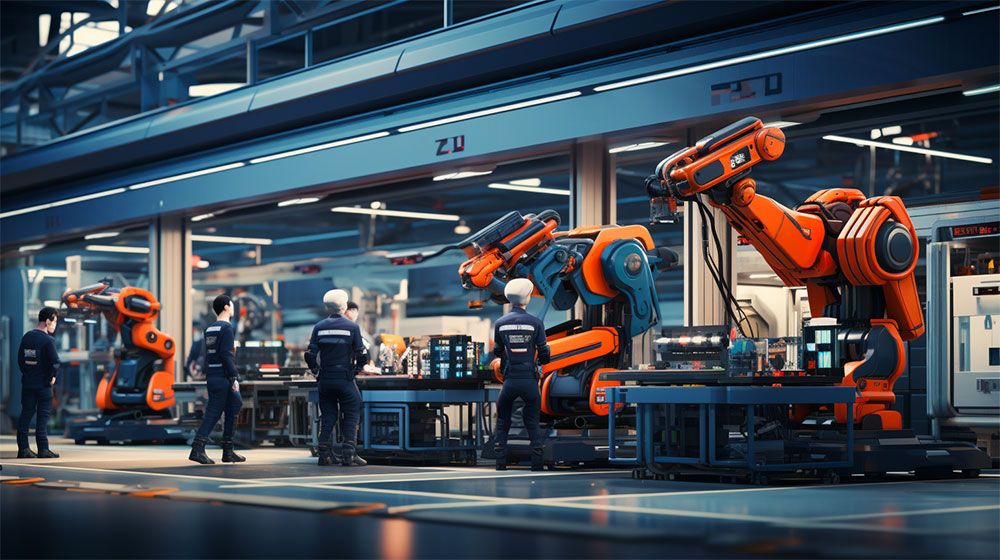
Contrary to popular belief, integrating robots into the workforce does not necessarily mean job displacement. Instead, recent developments have focused on human-robot collaboration, where robots augment human capabilities and support workers in performing their tasks more efficiently and safely.
For example, robots can assist medical professionals in the healthcare industry in delicate surgeries, reducing the risk of human error and improving patient outcomes. In logistics and warehousing, robots can collaborate with human workers in material handling and order fulfilment, alleviating physical strain and enhancing workplace safety.
To illustrate this, AI-driven robotics has emerged as a formidable solution to address the pressing labour shortage in German laboratories. With a staggering 87% of laboratories lacking sufficient staff to handle daily testing work, according to LABO - Fit for Lab, the need for automation has never been more critical. Traditional robotics have already made an impact in laboratory automation, but they struggle to adapt to rapidly changing demands and require complex programming.
Enter the robobrain®, a cutting-edge industrial PC fueled by artificial intelligence, serving as the central command of the robotic system. This intelligent brain, loaded with various skills, empowers the robot to perform tasks with unmatched flexibility and adaptability. From sample detection to complex procedures like pipetting, the robobrain® unlocks a new era of smart automation, relieving laboratory staff and revolutionising laboratory processes. The vast application potential allows robots to seamlessly integrate into existing systems and tackle the myriad challenges of modern laboratory work with precision and ease.
Robotics Innovation and New Opportunities
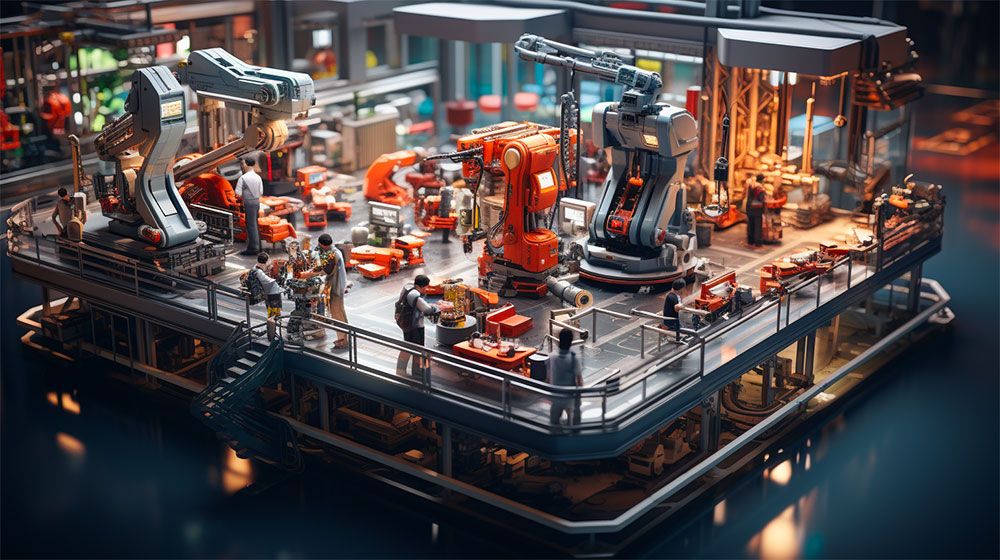
Robotics technology allows businesses to explore new business models, create cutting-edge goods and services, and expand into untapped markets. Also, integrating robots in industries such as artificial intelligence, machine learning, and data analytics can unlock valuable insights and drive data-driven decision-making.
The demand for skilled professionals who can design, program, and maintain robots has created a new job market. Organisations that invest in reskilling and upskilling their workforce in robotics-related skills can stay ahead of the curve and capitalise on the opportunities presented by this evolving landscape. Tesla's fully automated factories exemplify this, providing a significant competitive advantage through streamlined production, enhanced quality, and lower costs. From increased efficiency and productivity to enhanced quality control and workforce augmentation, robots have become essential tools for organisations seeking to stay ahead in an increasingly competitive world.
The development of M4, the Multi-Modal Mobility Morphobot, marks a groundbreaking innovation in robotics, offering new market opportunities and pushing the boundaries of locomotion. Created by researchers at Caltech’s Center for Autonomous Systems and Technologies, M4 boasts an array of capabilities inspired by various animals.
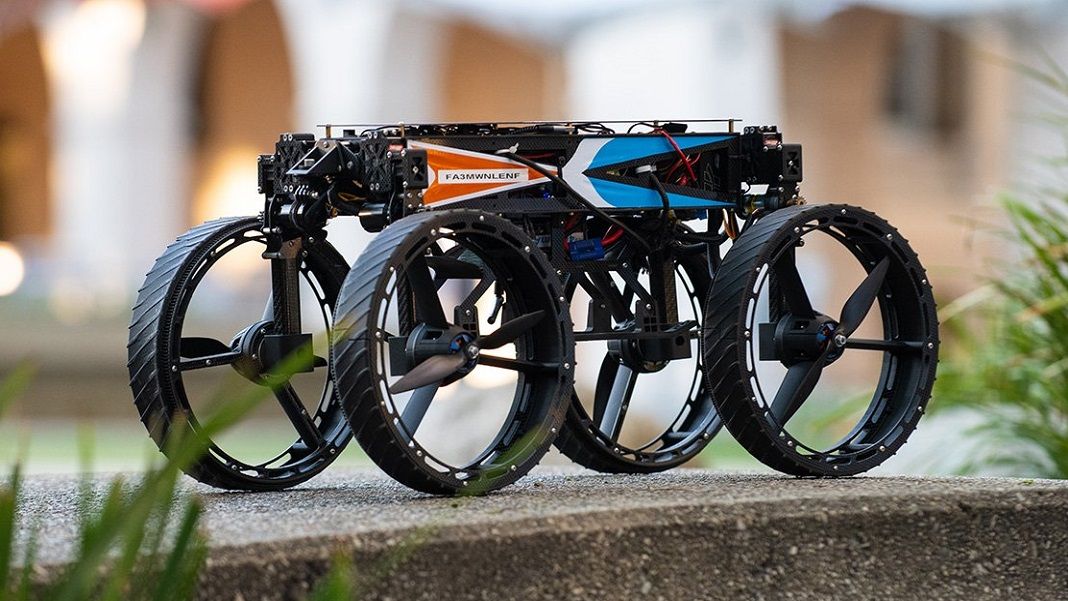
With wheels that transform into rotors, M4 can roll, fly, walk, and even add momentum while climbing inclines. AI allows the robot to assess its surroundings and adapt its motion accordingly, showcasing extraordinary mobility. From disaster site exploration to potential planetary missions, M4's versatility opens doors to diverse applications, with possibilities extending beyond our imagination.
Organisations must embrace a strategic approach to robotics integration as they navigate this evolving landscape. Organisations can take full advantage of current advancements in robotics and position themselves for success in the future by identifying areas where robots can have the biggest impact, investing in the necessary infrastructure and skills, and fostering an innovative culture.
Future Implications and Challenges of Robotics Advancements
As we witness the rapid development of robots and their increasing integration into various aspects of our lives, it becomes crucial to consider the potential implications and challenges that lie ahead. The transformative impact of robotics extends beyond mere efficiency gains and convenience, presenting a range of economic, social, and ethical considerations. These are the main issues to address:
- Robotic advancements will reshape industries and job markets in the future.
- Ethical and social challenges will emerge as robots become more autonomous.
- The development of regulatory and legal frameworks will be necessary to address safety and privacy concerns.
The advancement of robots and automation technologies has raised concerns about potential job displacement and the future of work. While robots can augment human capabilities and improve productivity, there is a legitimate fear that certain job roles may become obsolete.
In 2022, the U.S. Bureau of Labor Statistics projected varying degrees of job displacement due to the advancement of robotics automation. However, it is important to note that technological advancements also create new job opportunities. Organisations and governments must invest in reskilling and upskilling programs to equip the workforce with the necessary skills for emerging roles in robotics design, programming, maintenance, and human-robot collaboration.
In addition, as robots handle repetitive and physically demanding tasks, there is potential for workers to transition into more creative, strategic, and high-value roles that require human ingenuity, emotional intelligence, and critical thinking. Organisations should foster a culture of lifelong learning and adaptability to enable workers to thrive in the evolving job market and seize new opportunities presented by robotics.
The concept of Universal Basic Income (UBI) is one possible solution to the issue of job loss brought on by automation. UBI would provide individuals with a regular income regardless of employment status, thereby ensuring economic stability and facilitating the transition to new types of work and careers.
Integrating robots in sensitive industries such as healthcare, defence, and caregiving raises ethical considerations that must be addressed. Robotics has many benefits but must be used under the rules of justice, transparency, and accountability. Isaac Asimov's Three Laws of Robotics serve as guiding principles in this context. These laws emphasise the importance of ensuring the safety and well-being of humans when interacting with robots. It is crucial to incorporate these ethical principles into developing and deploying robotic systems, so we can foster responsible and trustworthy use of robotics in sensitive domains.
In fact, a recent UN-hosted robot press conference on AI underscores the increasing significance of technology's role in shaping our world. It highlights how the process of engaging robots and their creators fosters dialogue between humanity and cutting-edge AI, facilitating deeper understanding and informed decision-making for a future that embraces the potential of artificial intelligence for the greater good.
Ethical Concerns in Healthcare
In healthcare, for instance, using robots in patient care and diagnostics requires careful consideration of privacy, data security, and the potential impact on doctor-patient relationships. There must be clear guidelines in place to ensure that robots are used as tools to support healthcare professionals and enhance patient outcomes without compromising the quality of care or human connection. Also, regulations must be established to address liability and responsibility in the event of errors or malfunctions in robotic systems.
Ethical Concerns in Defense and Security
Similarly, in defence and security, the deployment of robots raises questions about the appropriate use of force, the potential for autonomous decision-making, and the implications for human safety. Striking the right balance between human control and the capabilities of autonomous robots is crucial to preventing unintended consequences and ensuring ethical conduct in sensitive contexts. The development of international agreements and frameworks can help establish guidelines for the responsible use of robotic technologies in defence and security applications.
The Issue of Bias and Discrimination in Robotic Systems
The potential for bias and discrimination in robotic systems must be addressed. As robots rely on algorithms and machine learning, biases can inadvertently be embedded into their decision-making processes. Efforts must be made to develop inclusive and fair robotic systems that do not perpetuate existing biases or exacerbate social inequalities. This requires diverse and inclusive teams of developers and rigorous testing to identify and mitigate biases throughout the design and development process.
Considerations of workforce well-being and the equitable distribution of benefits from robotics advancements should be paramount. Policies that ensure fair wages, retraining programs, and social safety nets can mitigate the potential negative consequences and support individuals affected by job displacement.
The rapid development of robots holds immense promise for the future, but it also comes with challenges and ethical considerations that demand our attention. We can maximise the benefits while minimising the risks by proactively addressing the potential impact on the job market and ensuring robots' responsible and ethical use in delicate industries.
Collaboration between policymakers, researchers, industry leaders, and society at large is crucial to developing regulatory frameworks, ethical guidelines, and education programs that foster a responsible and inclusive approach to robotics. I believe that there is still time to sculpt a future in which robots coexist peacefully with people, improving our quality of life, spurring innovation, and building a more just and sustainable society.
We must navigate the evolving landscape of robotics with foresight and responsible decision-making, ensuring that technology serves humanity's best interests and leads us towards a prosperous and inclusive future. With careful consideration and collective efforts, we can harness the potential of robotics while addressing the challenges and shaping a future that benefits all.
Final Thoughts
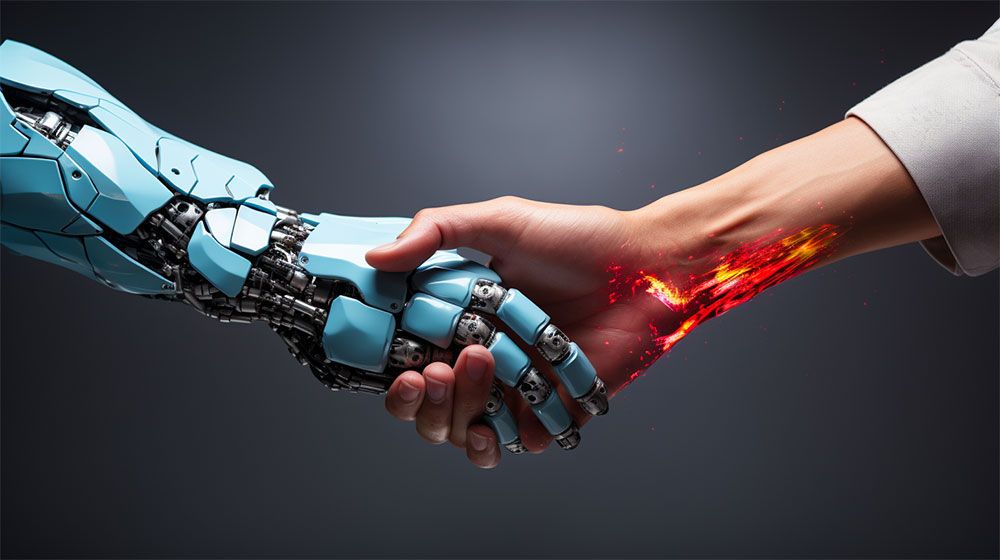
The dynamic evolution of robots has paved the way for an unprecedented era of technological breakthroughs and boundless potential. From powerful industrial automatons to the nurturing presence of service robots and humanoid companions, the strides in robotics have reshaped industries and fundamentally altered our work patterns and relationships with technology.
While the potential benefits of robots are vast, it is crucial to approach their integration with careful consideration and foresight. Organisations, policymakers, and society as a whole must actively engage in discussions surrounding the implications, challenges, and ethical considerations that arise from rapid robot development.
We can boost productivity, increase safety, and stimulate innovation by embracing the potential of robots and utilising their capabilities. However, it is equally important to prioritise human well-being, job security, and equitable access to the benefits of robotics. Reskilling and upskilling programs, along with policies that support a just transition, will be essential to navigate the changing landscape of work and ensure that no one is left behind.
Ethical guidelines and regulatory frameworks must be established to guide the use of robots in sensitive industries, such as healthcare and defence, ensuring transparency, accountability, and the protection of human rights. Striking the right balance between automation and human involvement will be crucial to maintaining human connections, preserving human decision-making, and addressing bias, discrimination, and privacy concerns.
The essence of collaboration among diverse stakeholders assumes paramount significance. In this realm of rapid robotics advancement, researchers, engineers, policymakers, ethicists, and the public must converge their expertise and perspectives, forging a collective path that resonates with our shared values.
The profound potential that robots bring to the table demands a thoughtful and deliberate approach. We can orchestrate a symphony of progress and transformation, ushering in a new era of innovation and heightened efficiency. However, in our quest for advancement, let us not lose sight of our humanity.
Responsibility and inclusivity should be our guiding stars. With a mindful outlook, we can ensure that the human experience remains at the heart of every robotic endeavour. Let’s envision a future where robots and humans join hands in harmonious collaboration, where technology serves as a catalyst for building a world that thrives on equity, sustenance, and prosperity for all.
Images: Midjourney



